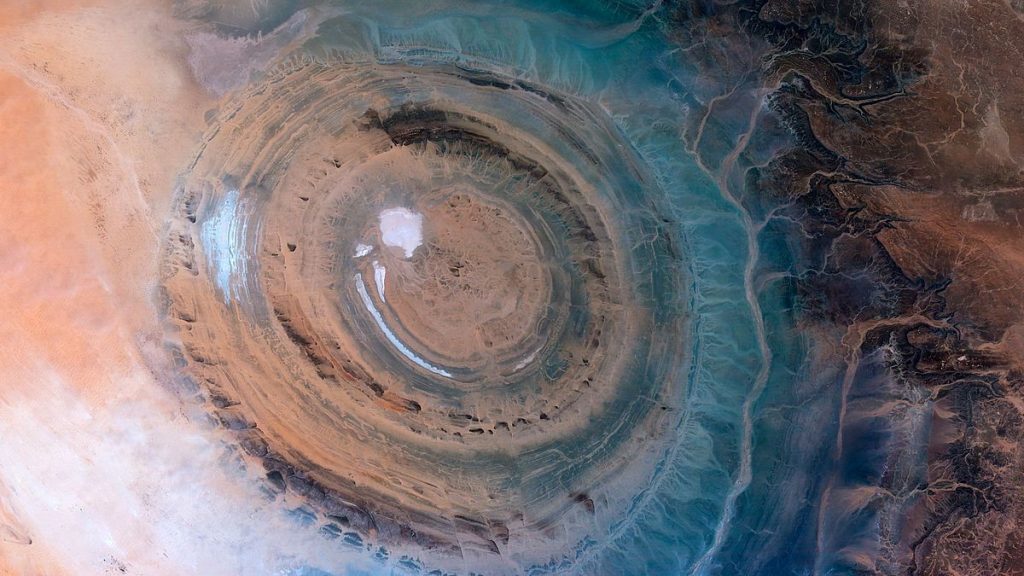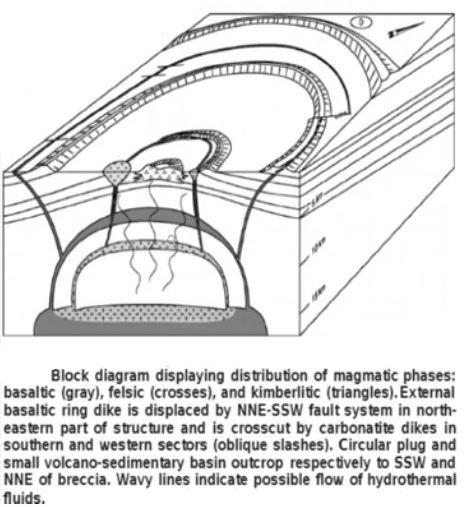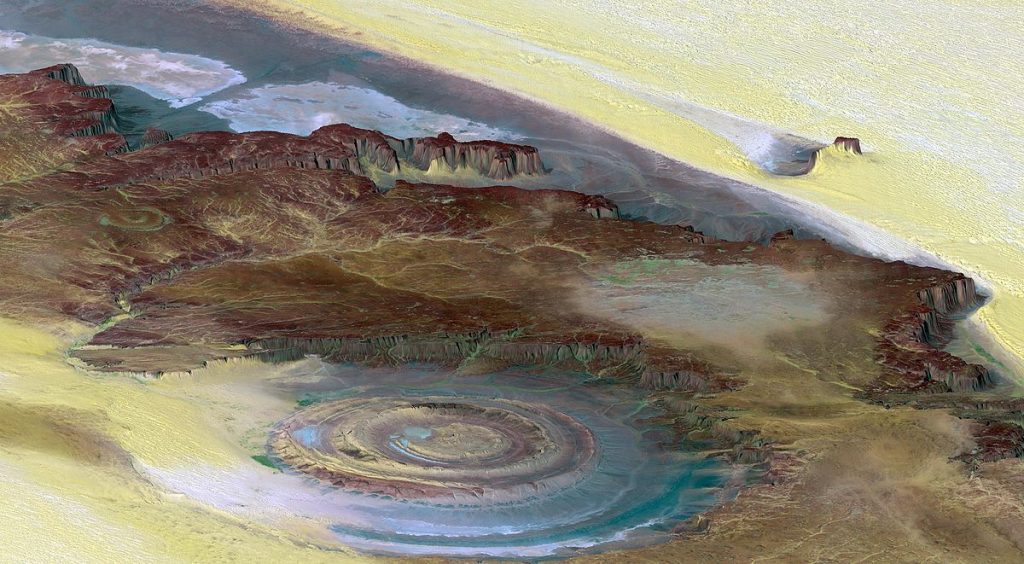
While looking for something else I found … this beautiful eye of stone. It’s so large that it’s best seen from outer space, as shown in a photo from the International Space Station.
The Eye of the Sahara or the Richat Structure is embedded in the Adrar Plateau near Ouadane, Mauritania. It’s 25 miles across — the distance from Pittsburgh to Greensburg — so people couldn’t see its unusual shape until we could fly above it.
When photos came back from the Gemini space missions in the 1960s, the geologists went to work. At first they thought it was a meteor impact crater but meteors leave evidence behind and “the critical rock types failed to reveal a single feature attributable to shock processes. We, therefore, dismiss an impact origin for this structure. It must, instead, be endogenic.”
Endogenic means “formed below the earth’s surface.” Indeed the Richat structure is a geologic dome, a magma bubble that hardened before it broke the surface then eroded away to expose the bubble’s onion-like layers. The youngest rock is on the outer edge, the oldest — 600 million years old — is in the center. The rust, blue, and white colors are the different kinds of rock.

This topographic reconstruction from satellite photos shows how the Eye is a bullseye bowl in the desert plateau.

Topographic reconstruction of Richat Structure using satellite photos, false coloring to show geology (image from Wikimedia Commons)
In the end, it’s visible because it’s in the Sahara. No vegetation covers it and the wind has blown all the sand away.
(images from Wikimedia Commons and a video by Jeffrey Sonders; click on the captions to see the originals)
Looks so much as if a huge tornado touched down, and remained right there, till it’s power diminished, and faded off .
Do we have an approximate Age? Based on the surface rock, how long has it been exposed ?
Stuart, according to Wikipedia it is about 99 million years old.